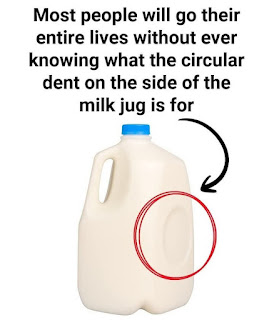You’ve seen it countless times—the small, circular dent on the side of a milk jug. But have you ever wondered why it’s there? Turns out, it’s a clever design feature with multiple hidden benefits.
First, it’s a pressure-release system. Milk expands when warm and contracts when cold, and without this flexible spot, the jug could warp or even burst. The dent gives the plastic room to breathe, preventing leaks and explosions (especially if you’ve ever accidentally frozen milk).

It also works like a shock absorber. Drop the jug, and the dent helps spread out the force, reducing the risk of cracks. That’s why milk jugs can survive minor falls without always making a mess—saving you from a slippery cleanup.

But the real brilliance? The dent strengthens the jug while using less plastic. Instead of thick walls, this simple indentation provides stability, keeping the jug lightweight and cost-effective. Less plastic means fewer resources used and less waste.
Here’s a handy trick: if the dent starts bulging, your milk might be going bad. Spoilage bacteria produce gas, pushing the dent outward—a subtle warning before you pour a sour glass.

Circles were chosen because they handle pressure better than any other shape, and they’re easy to produce consistently.
So next time you reach for the milk, take a moment to appreciate that little dent. It’s a small but mighty piece of engineering, working hard to keep your milk fresh, your fridge dry, and the earth a little greener.


